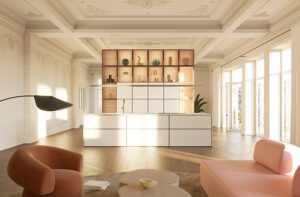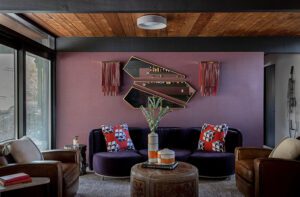Designer Snapshot: A Curatorial Eye
January 2, 2013
By Paula M. Bodah
Christine Tuttle‘s education in art history and her work experience in galleries, museums and auction houses have given her a deep and wide knowledge of fine and decorative arts from seventeenth-century to modern day. “My graduate program was based in connoisseurship, a skill rarely featured in other academic settings,†the Dedham, Massachusetts-based designer says. “As a result I tend to approach my projects holistically.â€
Just out of college, Christine worked as an assistant to the head curator at a museum where, she says, she was exposed to an “object-based teaching style. You held the Picasso, the eighteenth-century silver or the Ming vase. Working with truly great things really hones your eye.â€
Christine, one of the designers featured in Perspectives in our January/February issue, uses her curatorial background in her design work. “I feel that the word curate has become wildly overused to describe everything from a fashion pop-up store to furniture auctions, music playlists and random sales on websites,†she says. “Curating, or taking care of objects with a specialist’s knowledge and scholarship within the context of a gallery or museum, is much different than the diluted term everyone is using today. “
Still, she confesses, “It is that training that gives me a knee-jerk reaction to care for and select the proper pieces for a room.â€
 Photo by Eric Roth
Photo by Eric Roth
“The sculptural quality of the Carl Hansen chairs and the Holly Hunt light fixture certainly command attention in this breakfast room,†Christine explains. “There was one wall to hang art, right in the path of the traffic flow to the outside terrace.  My formal European training guided me to put a still life in a dining area but I made it something fun and interesting.  I chose a Warhol lithograph titled After the Party, a graphic work that has some depth to draw the eye. The subject matter is a tablescape of plates and glasses after Bianca Jagger’s birthday party. “
Not everything in a room has to be special and important. Good design can be found at all levels, she insists. Here, for instance, she notes, “Amid all of the expensive art, furniture and lighting, I placed a simple glass-topped console from Crate & Barrel on the wall beneath the art.â€
 Photo by Eric Roth
Photo by Eric Roth
“This living room, in a Wellesley Hills home, has a mix of strong forms that all work together.  A bold gilt-wood mirror–a a takeoff on the traditional gilt-wood convex mirror–hangs above the simple fireplace surround clad in Pietra Cardoza. Modern art, orange pillow fabric from Larsen in a large, loose Fortuny-like print, an oversize floor lamp, deep armchairs upholstered in Cowtan & Tout velvet and a seventeenth-century Old Master drawing perched on the mantel make the room distinct.  The tone-on-tone silk rug and a simple palette of pale blue, deep orange and oatmeal lend sophistication.â€
 Photo by Michael J. Lee
Photo by Michael J. Lee
“This is a detail of a front hall in a 1890s home.  The hall is filled with early American furniture including a Sheraton bow-front chest of drawers from 1820. I added Satsuma vase turned into a lamp, American folk art paintings, eighteenth-century French lithographs and a bronze rabbit sculpture by the artist William Turner–then combined it all with a modern X-framed Lee Jofa stool, Lee Jofa floral fabric at the windows, bleached wood floors and Farrow & Ball wall paint.  The color scheme of cream, black, straw and gold is decidedly monochromatic to let the decorative objects shine.â€
Share
![NEH-Logo_Black[1] NEH-Logo_Black[1]](https://www.nehomemag.com/wp-content/uploads/2022/08/NEH-Logo_Black1-300x162.jpg)








You must be logged in to post a comment.